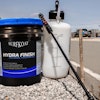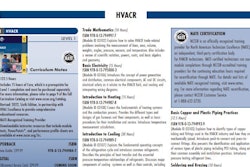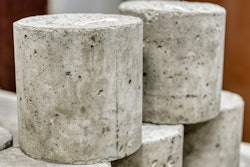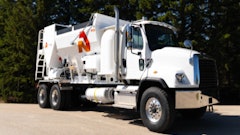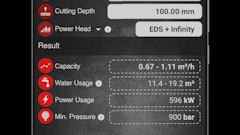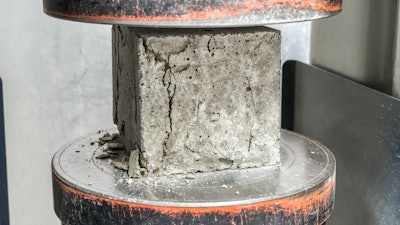
Consider the following scenarios for a project on which the specified compressive strength (fc’) is 3,500 psi at 28 days.
- A single seven-day-old cylinder breaks at 2,250 psi. The Architect says this is less than 70 percent of fc1 and the concrete strength is suspect.
- A 28-day test result is 3,150 psi and the testing laboratory states in its report that this result does not meet project specifications.
- The average of three consecutive, 28-day strength tests is 3,400 psi and the Owner wants the concrete removed and replaced.
These are all examples of incorrect interpretations of the acceptance criteria for concrete strength test results in accordance with ACI 318 “Building Code Requirements for Structural Concrete” and ACI 301 “Specifications for Structural Concrete.”
Both of these documents define a strength test as the average strength of two 6x12-in. or three 4x8-in. cylinders tested at 28 days or at a test age designated for fc1.
ACI Acceptance Criteria
The acceptance criteria for concrete strength tests has been the same since the early 1970’s but for more than 40 years they have often been interpreted incorrectly. Fortunately, ACI committee E702 published “Designing Concrete Structures: Acceptance of Concrete Test Results” in March, 2007 to provide a step-by-step example of concrete test-result evaluation and an explanation of the acceptance criteria. The document is a free download on the ACI web site. The data used in this article is based on that ACI document.
ACI has two requirements for the acceptance of concrete test results as shown below.
Strength level of a concrete mixture shall be acceptable if (1) and (2) are satisfied:
- Every arithmetic average of any three consecutive strength tests equals or exceeds fc1.
- No strength test falls below fc1 by more than 500 psi if fc1 is 5000 psi or less; or by more than 0.10 fc1 if fc1 exceeds 5000 psi.
Note that ACI does not require:
- A minimum strength at seven days
- A minimum strength for an individual cylinder that is part of the test
- All strength test results to exceed fc1.
ACI 318 accounts for concrete strengths less than fc1 by multiplying the calculated strength of a member by a strength reduction factor, which is always less than 1. ACI 318 Commentary states that one of the purposes of the strength reduction factor is “to allow for the probability of understrength members due to variations in material strengths.” Thus ACI has already considered that the concrete may be less than fc1 and that is why an individual strength test result may be below fc1 by up to 500 psi or by not more than 0.10 fc1 when fc1 exceeds 5,000 psi.
Before Checking The Acceptance Criteria
Don’t reject concrete represented by strength test results until you confirm that the test results are valid. Use the checklist below to ensure the strength test results meet ACI testing requirements.
- Sampling frequency is adequate (once a day, once every 150 cubic yards, once for each 5,000 square feet of surface area for slabs or walls) [ACI 318:26.12.2.1]
- Samples taken on a random basis (concrete not sampled due to appearance, convenience or other possibly biased criterion) [ACI 318:R26.12.2.1(a)]
- Each set of cylinders comes from a different batch of concrete [ACI 318:R26.12.2.1(a)]
- For each strength test, is the average of at least two 6x12 in. cylinders or three 4x8 in. cylinders [ACI 318:26.12.1.1(a)]
- No water was added to the concrete [ACI 318:R26.12.2.1(a)]
- Testing agency performing acceptance testing complied with ASTM C1077. [ACI 318: 26.12.1.1(b)]
- Qualified field testing technicians performed the test on the fresh concrete [ACI 318: 26.12.1.1(c)]
- Qualified laboratory technicians performed the laboratory strength tests [ACI 318: 26.12.1.1(d)]
- Sampling, making and curing, and testing of the cylinders were in accordance with ASTM C172, C31, and C39. [ACI 318:26.12.3.1]

Calculations Needed For Acceptance of Strength Test Results
It’s best to develop a tabular format where the individual cylinder strengths are averaged to calculate the strength test result. After calculating test results, the average of any three consecutive strength tests can be calculated. The Table shows one format for accomplishing this.
After calculating the needed information, it is sometimes easier to spot trends by graphing the information. The graph below shows the strength test results and the average of three consecutive strength test results. The graph shows that the project started out well but then the strength started to decrease. Test number 14 would be considered a low strength-test result and an investigation would be needed. The average of three consecutive strength tests represented by test numbers 13, 14, and 15 indicate steps would need to be taken to increase the averages of subsequent strength test results.
What If The Acceptance Criteria Are Not Met?
If the average of three consecutive strength tests falls below fc1, but no strength test result is more than 500 psi below fc1, steps must be taken to increase the average of subsequent strength results. Note that nothing needs to be done with regard to the previous test results. Steps must be taken to increase future strength test results.
ACI Recommendations to Increase the Average of Subsequent Strength Results
The steps taken to increase the average level of subsequent strength test results will depend on the particular circumstances but could include one or more of (a) through (g):
- Increase in cementitious materials content;
- Reduction in or better control of water content;
- Use of a water-reducing admixture to improve the dispersion of cementitious materials;
- Other changes in mixture proportions;
- Reduction in delivery time;
- Closer control of air content;
- Improvement in the quality of the testing, including strict compliance with ASTM C172, ASTM C31, and ASTM C39.
Such changes in operating procedures or small changes in cementitious materials content or water content should not require a formal resubmission of mixture proportions; however, changes in sources of cement, aggregates, or admixtures need to be accompanied by evidence that the average strength level will be improved.
In addition, if an individual strength test result falls below fc1 by more than 500 psi if fc1 is 5000 psi or less; or by more than 0.10 fc1 if fc1 exceeds 5,000 psi, a low strength-test investigation is required as described.
ACI Requirements For Investigating A Low Strength-test Result
- If any strength test of standard-cured cylinders falls below fc1 by more than the limit allowed for acceptance, or if tests of field-cured cylinders indicate deficiencies in protection and curing, steps shall be taken to ensure that structural adequacy of the structure is not jeopardized.
- If the likelihood of low-strength concrete is confirmed and calculations indicate that structural adequacy is significantly reduced, tests of cores drilled from the area in question in accordance with ASTM C42 shall be permitted. In such cases, three cores shall be taken for each strength test that falls below fc′ by more than the limit allowed for acceptance.
- Cores shall be obtained, moisture-conditioned by storage in watertight bags or containers, transported to the testing agency, and tested in accordance with ASTM
C42. Cores shall be tested between 48 hours and seven days after coring unless otherwise approved by the licensed design professional. The specifier of tests referenced in ASTM C42 shall be the licensed design professional or the building official. - Concrete in an area represented by core tests shall be considered structurally adequate if both the following are satisfied: 1) The average of three cores is equal to at least 85 percent of fc1 and 2) No single core is less than 75 percent of fc1.
- Additional testing of cores extracted from locations represented by erratic core strength results shall be permitted.
- If criteria for evaluating structural adequacy based on core strength results are not met, and if the structural adequacy remains in doubt, the responsible authority shall be permitted to order a strength evaluation in accordance with Chapter 27 for the questionable portion of the structure or take other appropriate action.
For the example illustrated in the graph, steps to increase the average of subsequent strength results would be required and the test Number 14 result would require an investigation.
The Struggle Continues
It’s unfortunate that after 40 years of use, the provisions for acceptance of strength test results are still incorrectly interpreted. Contractors have had to repair or remove and replace concrete that was acceptable because the parties involved did not understand the ACI acceptance criteria. Perhaps this struggle will end if concrete contractors use the ACI E702.3 document and this article to explain the Code and specification requirements for accepting strength test results.
Editor's Note: The current “Building Code Requirements for Structural Concrete (ACI 318)” and “Specifications for Structural Concrete (ACI 301)” can be purchased at www.concrete.org. ACI E702.3 is available as a free download from the ACI bookstore.
